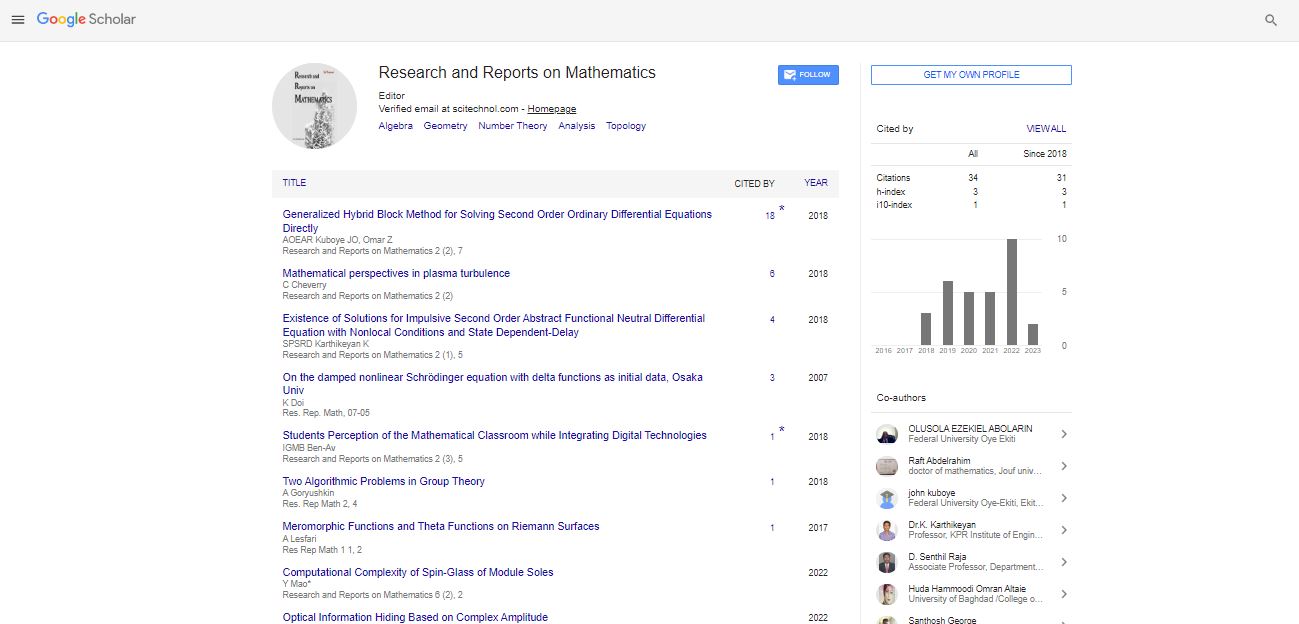Perspective, Met Mater Int Vol: 8 Issue: 1
Metals: Architects of Aeronautics and Atomics
Francesca Minutolo*
1Department of Chemical Engineering, University of Naples Federico II, Naples, Italy
*Corresponding Author: Francesca Minutolo,
Chemical Engineering, University of
Naples Federico II, Naples, Italy
E-mail: francesca.minutotlo@unina.it
Received date: 24 February, 2024, Manuscript No. RRMT-24-136642;
Editor assigned date: 28 February, 2024, PreQC No. RRMT-24-136642 (PQ);
Reviewed date: 14 March, 2024, QC No. RRMT-24-136642;
Revised date: 21 March, 2024, Manuscript No. RRMT-24-136642 (R);
Published date: 28 March, 2024, DOI: 10.4172/Rrmt.1000199
Citation: Minutolo F (2024) Metals: Architects of Aeronautics and Atomics. Met Mater Int 8:1.
Description
Metals have long been pivotal in advancing aerodynamics and reactor setups, where their properties of strength, durability, and thermal conductivity have propelled technological progress. This manuscript provides a comprehensive probe of the contributions of metals in these domains, elucidating their roles in aircraft design, propulsion systems, nuclear reactors, and energy generation. By examining the multifaceted applications of metals in aerodynamics and reactor setups, this review underscores their indispensable role in shaping modern transportation, energy production, and scientific study. The integration of metals into aerodynamics and reactor setups has revolutionized transportation, energy production, and scientific research.
This section introduces the theme of the manuscript, highlighting the significance of metals in enabling advancements in aerodynamics, propulsion, nuclear energy, and reactor technologies. It sets the stage for an in-depth survey of the contributions of metals across various applications in these domains. Metals play a critical role in aircraft design and aerospace engineering, where they provide structural integrity, heat resistance, and lightweight properties. This section examines how metals such as aluminium, titanium, and composites contribute to aircraft fuselages, wings, engines, and propulsion systems, enabling safe and efficient flight operations in commercial, military, and space applications. Propulsion systems rely heavily on metals for their performance, reliability, and efficiency. This section explores the role of metals in jet engines, rockets, and propulsion systems, discussing their use in turbine blades, combustion chambers, nozzles, and thrust structures.
It highlights the advancements in metallurgy and materials science that have led to improvements in engine performance, fuel efficiency, and environmental sustainability. Metals are essential components in nuclear reactors and energy generation systems, where they withstand high temperatures, neutron fluxes, and corrosive environments. This section examines how metals such as steel, zirconium, and nickel alloys are used in reactor vessels, fuel assemblies, heat exchangers, and steam turbines, facilitating the production of electricity through nuclear fission and fusion reactions. Metals are indispensable in nuclear reactors and energy generation systems, where they withstand extreme conditions of temperature, pressure, and radiation. Highstrength metals such as steel, zirconium, and nickel alloys are used in reactor vessels, fuel assemblies, and core components to contain nuclear fuel, moderate neutron flux, and transfer heat.
Stainless steel and other corrosion-resistant alloys are used in steam generators, heat exchangers, and coolant circuits to facilitate heat transfer and energy conversion. Additionally, metals plays an essential role in structural support, shielding, and containment structures, ensuring the safety and integrity of nuclear facilities. The unique properties of metals, including their durability, thermal conductivity, and neutron absorption capabilities, make them indispensable materials in nuclear reactor design and operation. As the demand for clean and sustainable energy sources grows, metals will continue to play a vital role in enabling nuclear power generation and advancing energy security. Metals plays an important role in heat transfer and thermal management in aerodynamics and reactor setups, where they dissipate heat, regulate temperature, and prevent thermal stress.
The use of metals such as copper, aluminium, and alloys in heat exchangers, cooling systems, and thermal insulation, optimizing performance and efficiency in aerospace propulsion, nuclear power plants, and thermal power generation. Metals provide structural integrity and reliability in aerodynamics and reactor setups, ensuring the safety and longevity of critical components and systems. This section examines how metals are engineered to withstand mechanical stress, fatigue, and environmental degradation, employing techniques such as alloying, heat treatment, and surface coatings to enhance durability and performance. While metals offer numerous benefits in aerodynamics and reactor setups, their production, use, and disposal raise environmental and safety concerns. This section discusses the environmental impact of metal extraction, processing, and waste management, as well as safety considerations in nuclear reactor operation, aircraft maintenance, and transportation of hazardous materials.
Conclusion
Metals are indispensable materials that drive innovation and progress in aerodynamics and reactor setups, enabling advancements in aircraft design, propulsion systems, nuclear reactors, and energy generation. This manuscript has provided a comprehensive overview of the contributions of metals in these domains, highlighting their roles in structural integrity, heat transfer, and reliability. By addressing environmental and safety considerations, we can ensure the sustainable contribution of metals to aerodynamics, reactor setups, and beyond. This study offers a thorough examination of the contributions of metals in aerodynamics and reactor setups, covering their roles in aircraft design, propulsion systems, nuclear reactors, and energy generation. It underscores the indispensable nature of metals in shaping modern transportation, energy production, and scientific survey, while also addressing environmental and safety considerations for their sustainable use.
 Spanish
Spanish  Chinese
Chinese  Russian
Russian  German
German  French
French  Japanese
Japanese  Portuguese
Portuguese  Hindi
Hindi 